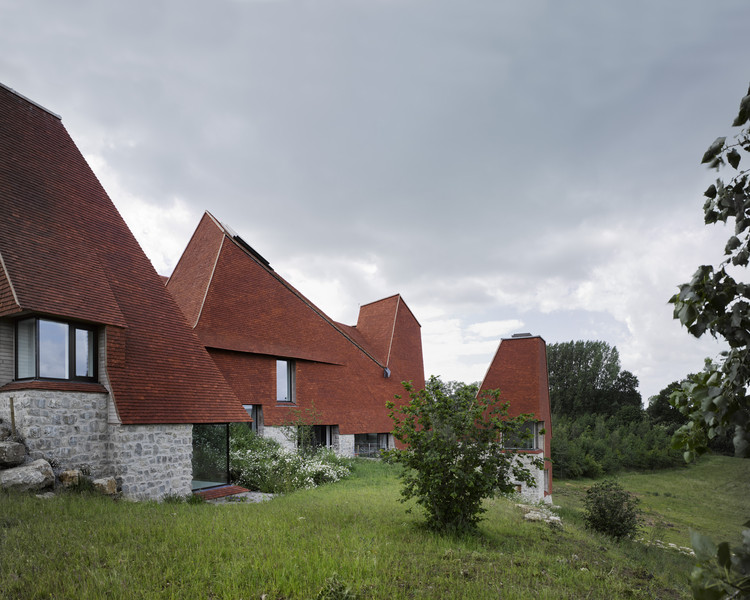
This article was originally published by Common Edge as "Why Homes Are the Original Architecture."
Homes may be the most powerful projection of architectural value. Because shelter is essential for all of us, the home is architecture’s universal function. We’re all experts on what our own home must be, to us.
But architects often have a different view of home. Twenty years ago—during the recession before the last recession—I remember hearing an architect declare that he could earn a living designing houses until “real work came along.” Another architectural meme is the classic first job: designing a house for your parents.

In school we were shown houses by Frank Lloyd Wright, Le Corbusier, Marcel Breuer. The venerated Farnsworth House by Mies van der Rohe was almost excruciatingly referenced. A special category is the ultimate commission—architects designing houses for themselves: think Philip Johnson’s Glass House, Frank Gehry’s addition, John Soane’s home. It’s a fascinating window into the mind of a designer, and their Platonic (or fevered) perceptions of everyday life.
But the universal reality of a home, the one place that everyone needs and knows, offers up value for architects, and it has nothing to do with style. There are extreme variations found in how homes are presented, from the most cynical pandering of homebuilder marketing, to the lazy thoughtless style-branding by realtors, to the dismissive prejudice of most academic or “serious” architects who discount “vernacular” (i.e. not modernist) homes.

Homes offer lessons to designers because they’re at once infinitely personal and culturally pervasive. They can be as simple as a glass of water, or as complex as an eight-course meal.
I thought it might be valuable to lay out the slippery realities that I have discovered designing, building, writing and talking about homes for the last 40 years:
- Homes are uniquely focused on beauty and expression, as well as protection: we do not blindly make burrows, hives or dams.
- Home is the one building everyone uses, everywhere: there are no options to having a place to sleep.
- Homes are uniquely controllable by a single person: the size of most homes can be conceived, evolved, detailed and built by one person (not so with almost any other design type).
- Homes have huge scale variations: there are very few puny prisons, huge chairs, or micro-hospitals, but houses can be as tiny as 200 square feet or as obscene 20,000.
- Homes are the one building type found in virtually every environment: they have relevance in both extreme density and absolute isolation.
- Homes can be built by their occupants or cost thousands of dollars per square feet: from favelas to “McMansions,” the same function can be almost infinitely interpreted.
- Homes are protection, but their deterioration and costs are an existential threat: each miscalculation is personal, each defect threatens those who use it.
- Homes are the largest set of clothing we own: no other building is as personal.
- Homes can be completely idiosyncratic or completely anonymous: but the most mass-produced structures in the world can also have the most intense personalization.
- Homes engender anger and love: the patrons care more about this building type than any other.
- Homes are some combination of mirror, portal, or wall: they uniquely symbolize their occupants’ devoted images and beliefs, invoking, evoking, and provoking, like no other building.

None of these observations deal with sites, or neighborhoods, or cultures, because all buildings must deal with larger contexts. The domestic flavor has a huge bandwidth: homes can be “machines for living” or “home sweet home,” but the character of where we live is always revelatory and personal (otherwise, it’s just a bed, any place).
Maybe it’s all in the name: perhaps “house” is a place to live, but a “home” is a fusion of place, family, and the people who use it. The vast majority of people simply buy or rent them and decorate; perhaps 2% use designers to create a fused, evolved and thought-out reality. You’re free to interpret this as “reality.”
Our homes are our most expensive object, no matter how big or small. They can be used to make money by simple appreciation, or they can wreck net worths, as millions discovered in the last decade.

Architects can dive into the values and perceptions of the homeowners they design for, or they can design for themselves. It’s much harder to listen than speak, especially for those who live to design.
Residential architects can be more valuable than HOUZZ, but only if we offer more than the realtor, the developer, or the landlord. The only way to offer more is to partner in the risky act making a home.
Here’s the final paradox: Creating a home is the most personal act that architects can be part of. But the challenge is that despite our training and skill we’re not the experts. Those who live in what we design know more than us about the manifestation of their hopes and dreams. We just have to listen well enough to lead.
Duo Dickinson has been an architect for more than 30 years. The author of eight books, he is the architecture critic for the New Haven Register, writes on design and culture for the Hartford Courant, and is on the faculty at the Building Beauty Program at Sant'Anna Institute in Sorrento, Italy.



